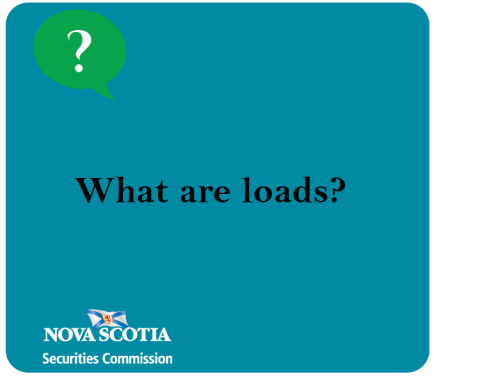Submitted by nsscadmin on

We continue to get questions from investors regarding investment fees. The latest question was about loads. Specifically, one reader wants to know what a load is. We’ve outlined a few different kinds of loads in previous posts, but we’ll go through them again so you can get the full low down on loads all in one place.
A load is a fee an investor pays when they purchase or sell a mutual fund. They can come in various forms, with the most common being front-end loads, back-end loads, and low loads. There are also no load mutual funds which we’ll also talk about.
Front-End Load:
A front-end load is paid when you purchase a mutual fund. It is basically an upfront fee, calculated as a percentage, deducted directly from the amount invested. As an example, let’s say you’re investing $1,000 in a mutual fund with a two per cent front-end load. We calculate two per cent of $1,000 to be $20. This $20 is paid to your adviser and the remaining $980 is invested.
Back-End Load:
A back-end load is also known as a deferred sales charge. This is paid to an adviser by the mutual fund company who issues the fund. A back-end load is typically five per cent of the amount purchased. Using our $1,000 mutual fund example again, in this instance the mutual fund company would pay the adviser $50. With a back-end load the investor may not pay any upfront cost like they do with a front-end load, but there can be a fee if you withdraw money from the fund before a certain period of time. This is typically five to seven years. If you were to withdraw money before this you could be charge a deferred sales charge redemption fee. This fee is waived once the time period passes, meaning you would have to stay locked into the fund to avoid paying the fee giving you slightly less freedom when it comes to managing your money.
Low Load:
Some mutual funds have low loads, also known as low sales charges. A low load fund charges a lower sales charge at the time of purchase and also has a lower redemption fee. Both are typically set at around three per cent. The time period to waive the redemption fee is also usually shorter, around three years instead of five to seven. If you are looking at a low load fee make sure you closely examine the risk, fees and redemption time line to make sure the product is right for you and your investment goals.
No Load:
A no load fund is exactly what it sounds like. A fund that does not charge a fee at purchase. That does not mean it is guaranteed to be a better deal than a fund with a load. You also need to compare the fund’s risk, potential returns, management expense ratio and how it fits into your investment profile.
